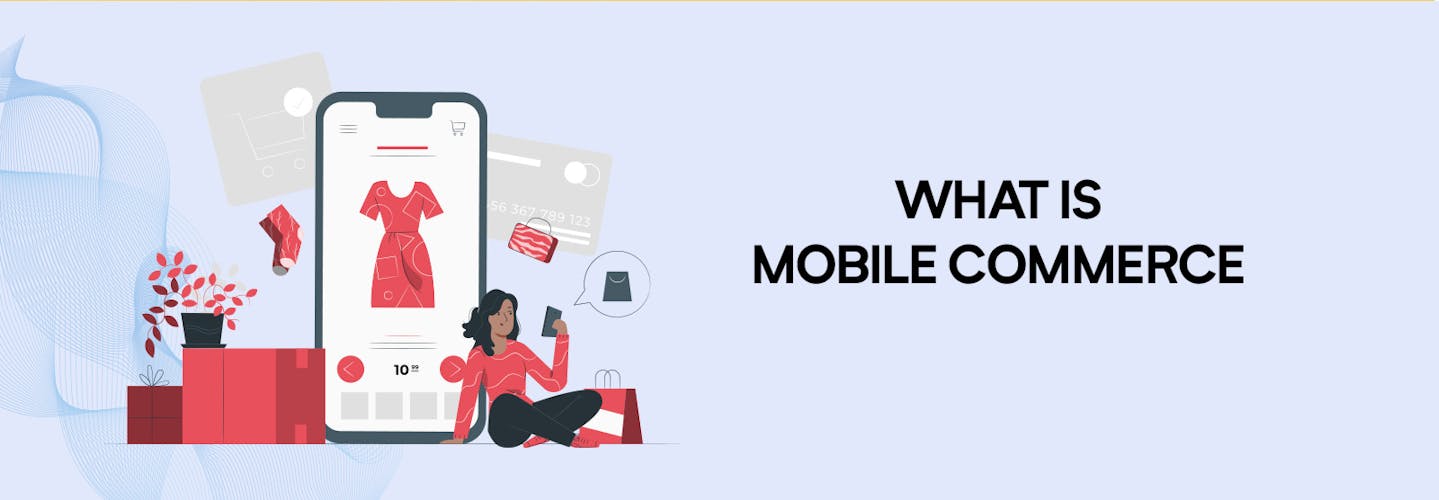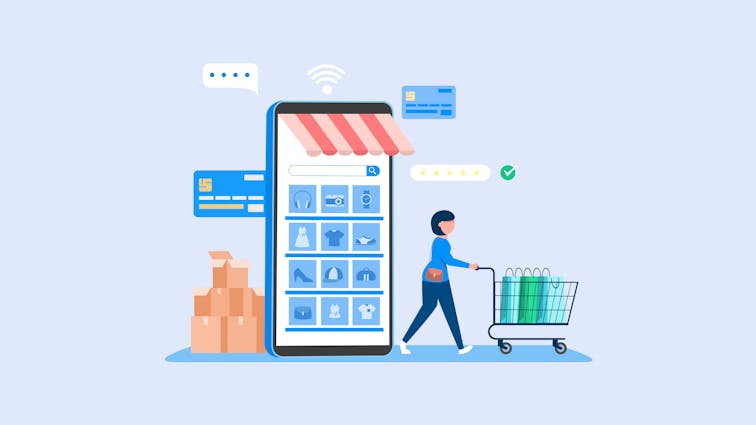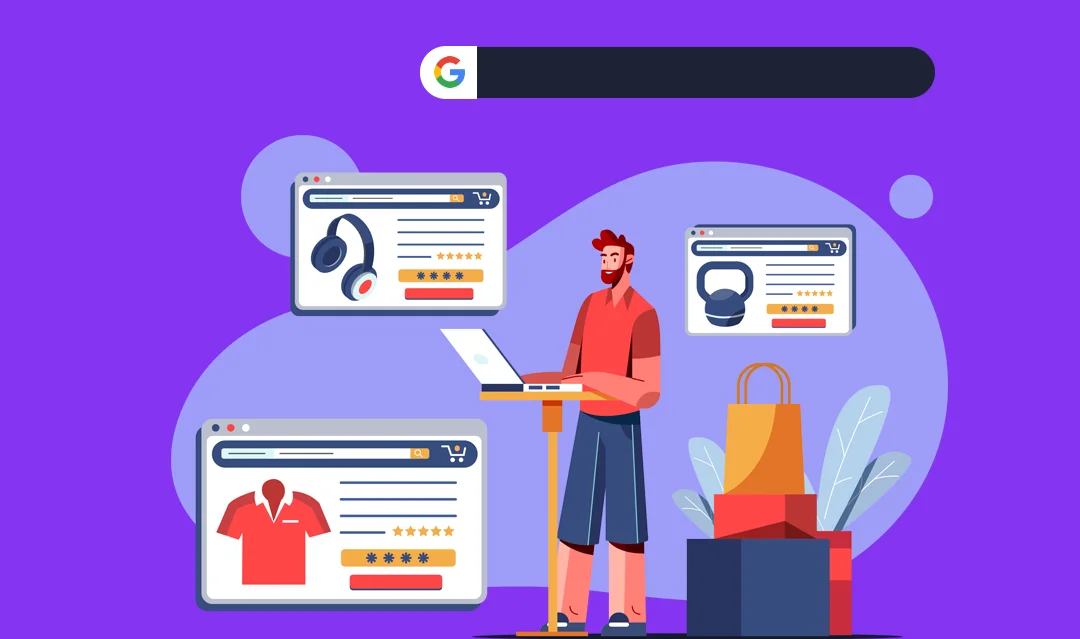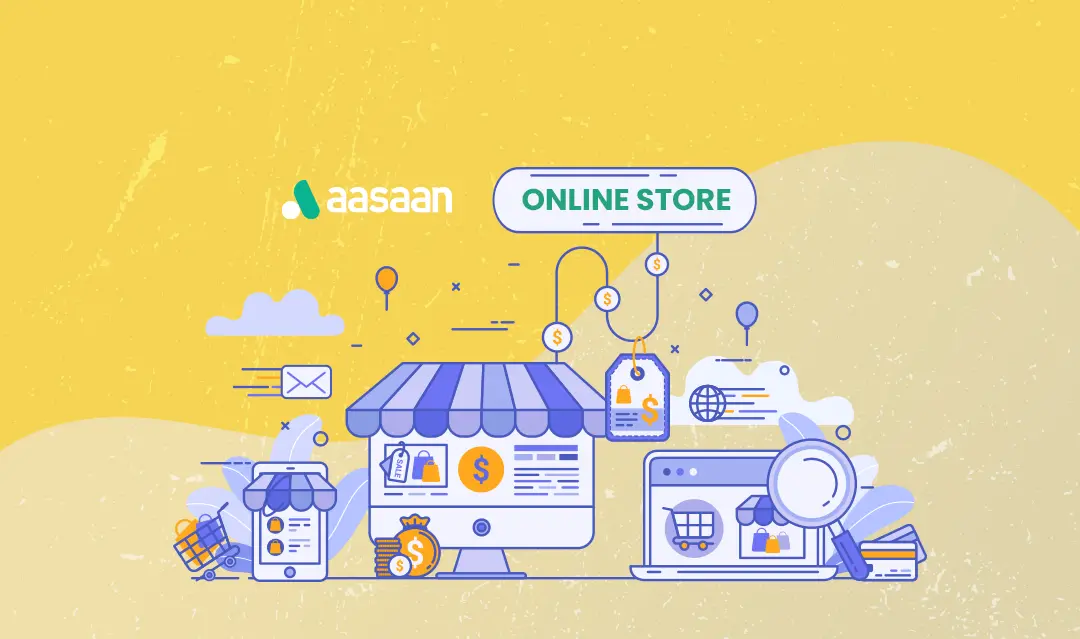
What is M-Commerce? How are Ecommerce Brands Shifting to Mobile-First Commerce?
The rise of the internet and the vast penetration of smartphones have led many ecommerce and retail brands to switch to mobile-centric methods.
Smartphone devices are no longer just a mode of communication for family and friends but also for companies and brands to connect with customers. Thanks to mobile commerce, also known as “m-commerce,” people can now make bulk purchases through mobile devices, applications, and websites.
Most brands are launching dedicated applications to enable consumers to purchase their favourite products online through smartphone devices.
If you are among those small and medium business owners who want to scale their business through the internet, the best option would be to focus on m-commerce since this market is projected to exceed $710 billion in 2025.
- M-commerce sales are expected to reach $415.93 billion in 2023, accounting for 6% of all retail sales
- Retail m-commerce sales expected to account for 43.4% of total retail e-commerce sales in 2023
- Global Mobile Commerce market size valued at USD 1172563.36 million in 2022
- Projected to expand at a CAGR of 33.27% during the forecast period (2022-2029)
- Market size projected to reach multimillion USD by 2029
With this statistic in mind, it is imperative to learn about m-commerce and what strategies online sellers can implement to maximize their profits through m-commerce.
What Exactly is Mobile Commerce?

Mobile commerce refers to shopping through smartphone devices - all the transactional formalities are also done through these devices.
The primary goal of m-commerce is to enhance the CX (customer experience) on mobile devices to scale a business to the next level. Generally, m-commerce is categorised into:
- Mobile banking
- Mobile shopping
- Mobile payments
- Digital wallets
The significant development of smartphones and internet accessibility is dominant in today’s time and is the primary cause of the development of mobile commerce. As more people transition to m-commerce, it is going to evolve ecommerce significantly
Mobile-Friendly vs Mobile-First Commerce: What’s the Difference?
Mobile-friendliness is now a mandatory requirement for businesses in today’s world. However, the best brands are moving one step ahead and optimising their pages for mobile-first commerce.
Let us look at the difference between mobile-friendly and mobile-first commerce:
1. Display of Content
Mobile-Friendly: The websites of desktops serve as the starting point and the foundation of such design**.** Hence, the creation of a mobile-friendly website begins with its features and content.
**Mobile-First:**Sites made with a mobile-first approach display the most important content first, irrespective of a website’s features. Rather than focusing on the effects, the structure and design will take precedence.
2. Responsiveness to Other Devices
**Mobile-Friendly:**The site simplifies and hides the larger elements on mobile devices. All the objects of a site are retained, but they might be hidden.
**Mobile-First:**The site will start out lightweight and add elements as the screen gets bigger. Rather than hiding the objects on smartphones, the site will add them when viewed on bigger devices like desktops and TVs.
3. Page Loading Time
Mobile Friendly: Having a heavily optimised site may also slow down the loading speed. Moreover, the size of such websites is usually larger and consumes a higher amount of data.
**Mobile-First:**Websites made with the mobile-first process are optimised for faster page loading. The site starts with a lightweight design and gradually scales when needed. The mobile-first approach is thus the most suitable option for faster loading and lighter websites
How to Implement a Mobile-First Strategy?
The following are some of the primary strategies that you can implement for optimized m-commerce:
1. Create a Streamlined Checkout Process
If you have been involved in ecommerce for some time, you may know what a big issue the abandonment of online carts is for a business.
Making your checkout process quicker and more efficient will decrease cart abandonment rates, serve as an excellent m-commerce method, and keep your transactions consistent.
2. Optimise Websites for Mobile Devices
Businesses must remember that building a customized application may not provide immediate returns. If that’s the case, you can still make the m-commerce experience great by creating your website mobile-friendly.
It would be preferable if you reduce the number/size of large images, shorten longer content, and optimise other elements.
3. Keep the Content Light
If you want to optimise your current website for mobile devices, you will have to make significant changes to your site and get rid of some common issues.
For e-commerce, you will have to emphasise mobile accessibility. Remember, shorter texts are better than long paragraphs. To avoid wider spacing, the margins should always be smaller.

How are ECommerce Brands Shifting to Mobile-First Commerce
A. Why ECommerce Brands are Shifting to M-Commerce
With the rapid growth of mobile technology and the increasing number of consumers using mobile devices to shop online, ECommerce brands are recognizing the importance of a strong mobile presence.
The shift to m-commerce is being driven by several factors, including the widespread adoption of smartphones and tablets, the convenience and accessibility of mobile shopping, and the changing shopping habits of consumers.
Consumers are increasingly using their mobile devices to research products, compare prices, and make purchases, and ECommerce brands are responding by investing in mobile-optimized websites and mobile marketing strategies.
Another factor driving the shift to m-commerce is the rise of social media and messaging apps, which are changing the way consumers interact with brands and make purchases.
Brands are leveraging these platforms to reach customers where they are already spending their time and to provide a more personalized and seamless shopping experience.
B. How Brands are Adapting to M-Commerce
To succeed in the m-commerce space, ECommerce brands are adopting various strategies, such as optimizing their websites for mobile devices, using targeted mobile marketing campaigns, and offering mobile-only deals and discounts to customers.
Brands are also leveraging mobile payment options and location-based services to provide a more personalized and convenient shopping experience for customers.
One important strategy for brands is to provide a seamless and consistent experience across all touchpoints, including mobile, desktop, and in-store. This involves investing in technologies such as mobile-responsive design, mobile payments, and mobile-optimized checkout processes.
Another key tactic for brands is to use data and analytics to understand and respond to the unique needs and behaviors of mobile shoppers.
This includes collecting data on consumer preferences and behavior, as well as analyzing and responding to customer feedback and reviews.
C. Impact of M-Commerce on ECommerce
The shift to m-commerce is having a profound impact on the ECommerce industry, both in terms of the benefits and challenges it presents. On the one hand, m-commerce offers businesses a new and growing market for reaching customers, as well as the opportunity to collect valuable data and insights on customer behavior.
On the other hand, it also presents challenges such as the need for businesses to invest in mobile technology and resources, as well as the need to constantly adapt to the evolving mobile landscape.
In terms of the future of online shopping, m-commerce is poised to play a significant role, as more and more consumers adopt mobile devices and become comfortable making purchases on the go.
Brands that embrace m-commerce and invest in a strong mobile presence are likely to reap the benefits in terms of increased sales and customer engagement.
Benefits of Mobile Commerce

1. Better User Experience
The user experience is among the primary aspects of purchasing via tablets or smartphones.
Further, customisation enables online sellers to provide their customers with relevant and unique user experiences. Customers can now easily connect with a brand through the chatbot icon that most brands integrate on their websites or mobile applications.
2. Wider International Customer Base
Smartphones and the internet can help businesses build an international customer base since customers will have the ability to purchase according to their convenience. It will also construct another marketing channel where an application can be used to provide the best customer experience.
3. Faster Transactions
In general, many mobile apps are faster than conventional websites. Mobile commerce also offers customers quicker transactions. In e-commerce, time is money, and allowing customers to purchase things more quickly is lucrative.
Better UI (user interface) and browsing will help brands acquire better online sales via smartphones. This is a significant advantage of mobile commerce and one of the driving forces behind business scalability.
4. Enhanced Marketing
M-commerce platforms may offer new marketing channels that should not be overlooked. For example, an application may build communication between customers and the business.
M-commerce gives brands a valuable marketing mode where online businesses can sell their products to customers through mobile devices.
Challenges of Mobile Commerce
While m-commerce offers many benefits, it also presents some challenges that must be addressed by businesses. Some of the key challenges of m-commerce include:
- Investment in Mobile Technology:
Implementing a successful m-commerce strategy requires businesses to invest in mobile technology, such as mobile-optimized websites and mobile payment options. - Adapting to Evolving Mobile Landscape:
The mobile landscape is constantly evolving, and businesses must be prepared to adapt to new technologies and consumer behaviors in order to succeed in the m-commerce space. - Ensuring Security:
Ensuring the security of customer data and transactions is a critical concern for businesses engaged in m-commerce. Businesses must invest in robust security measures to protect customer information and prevent fraud. - Overcoming Technical Challenges:
Implementing m-commerce can also present technical challenges, such as ensuring compatibility with a wide range of mobile devices and operating systems.
Conclusion:
The future of m-commerce is positive and promising and will attract many retailers. We can expect to see more mobile commerce applications in the coming years. For instance, chatbots have already gained quite a bit of popularity, so many companies are integrating them into their brands.
To make your m-commerce more dynamic and to take your brand to the next level, choose aasaan. aasaan has made online store creation easier than ever. If you want to implement m-commerce for your brand, your business goals are just a few clicks away.
FAQ:
1. In what ways may consumers use their mobile devices to make purchases?
Clothing, electronics, household goods, food, and even luxury items like jewelry and high fashion are just some of the many products and services that may be purchased through mobile commerce.
Mobile commerce platforms also provide access to and the ability to purchase services like flight reservations, food delivery, and even medical care.
2. Can we trust mobile payments to be safe?
Consumers and retailers alike are understandably wary of conducting financial transactions via mobile devices. Most mobile commerce platforms encrypt sensitive data like credit card numbers and provide safe payment methods like Apple Pay and Google Wallet to keep customer information safe. In addition, many m-commerce platforms have fraud detection mechanisms in place to limit the possibility of fraudulent transactions.
3. Where do you see mobile shopping going from here?
As more people buy smartphones and other mobile devices and as technology advances, the future of mobile commerce looks bright. More widespread adoption of innovative technology like augmented reality, voice assistants, and others will certainly result in a more streamlined and customized retail experience.
4. To what extent does mobile commerce vary from traditional online shopping?
While the terms e-commerce and mobile commerce both refer to transacting business online, they are not interchangeable. Shopping using a mobile device, like a smartphone or tablet, is known as “mobile commerce.”
5. In what ways may the company benefit from mobile commerce?
Since mobile commerce makes it simpler for people to shop while on the go, it can help businesses attract new clients and boost revenue. In addition, it can help firms boost customer engagement and loyalty via more precise marketing and more tailored buying experiences.
In addition, the information gleaned via mobile commerce can be used to better tailor future offerings to the preferences of a company’s clientele.








